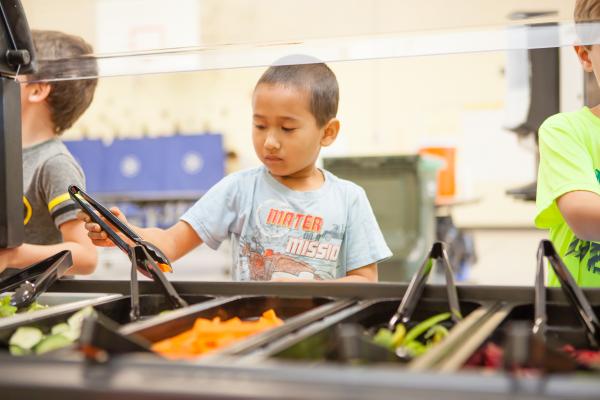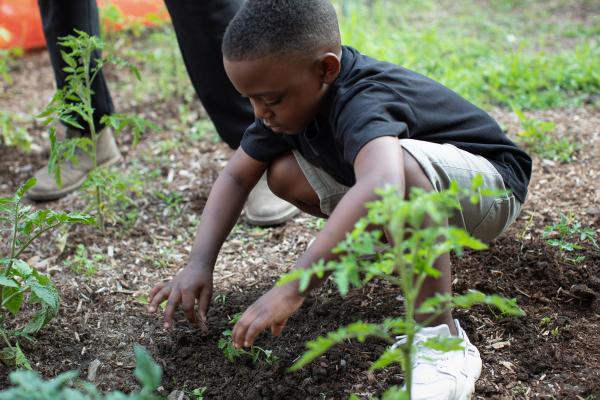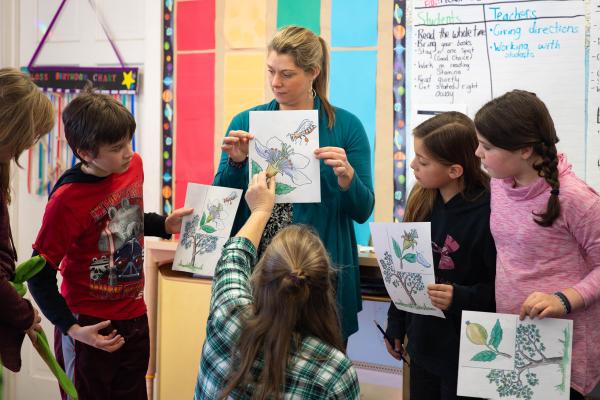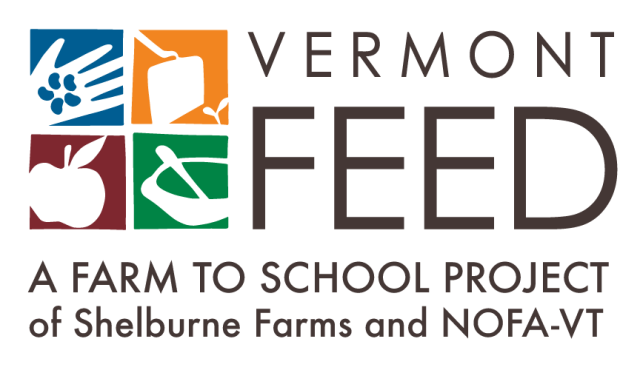What is Farm to School? Green Teacher Podcast Digs In
All over the country, schools are transforming food systems education. As part of a strategy called farm to school, there's a growing movement connecting classrooms, cafeterias, and communities to shape a better, more just future for youth and the planet.
Listen to Talking with Green Teachers interview with Vermont FEED* Program Director Betsy Rosenbluth and Shelburne Farms Institute for Sustainable Schools Director of Professional Learning Jen Cirillo. They discuss how farm to school can be the “garden bed” for integrating Education for Sustainability into school curricula and communities. Read on for excerpts from the interview, or listen to the full interview below.
*Vermont FEED is our farm to school partnership project with NOFA-VT.
Learn more about Green Teacher.
What is the concept of “farm to school”?
Betsy: Farm to school supports youth and connects the dots of where their food comes from and how their food impacts their bodies, the environment, and their community. But it’s really much more involved than that: it’s providing nourishing food and enough food to children and youth; helping support them to understand lifelong skills like how to grow, cook, and savor food; and how food connects to so many issues whether it’s water, soil, or poverty. And most importantly, what is their place in that system?
At Vermont FEED, which is our farm to school partnership between Shelburne Farms and the Northeast Organic Farming Association of Vermont, we describe our theory of change around connecting three C’s: How do we connect the classroom, the cafeteria, and the community to work toward changing the school food system?
Let’s think about the “why” of farm to school. How does farm to school impact classrooms?
Jen: We talk with educators, administrators, and departments or agencies of education about the “why” of farm to school, and there’s some things that are obvious. We want kids to be well-fed, nourished, and ready to learn. But we’ve also come to understand all of the other benefits of farm to school. We see young people engaged, and educators engaged, and that engagement leads to so many other positive benefits, like regular attendance in school, connecting the school to the community, and the community back to the school.
We see students saying, “I can’t wait to go to school to learn more about different aspects of farm to school”…There are opportunities to be outside, out of the classroom, connecting to what kids say is real and meaningful and tangible. With a lot of schools wanting to increase hands-on learning and skill-building, farm to school provides that. The outside is connected to learning through school gardens, local farms, greenhouses, or by exploring soil and climate change or agroforestry.
Betsy: We describe it as a virtuous cycle. Farm to school gets kids really excited about the food they’ve been served in the lunch line. They do taste testing, they may have even cooked in the classroom, so they’re participating more in school meals and there are familiar products. Attendance increases. That helps the viability of the school meal program, which provides more money to buy local products. It’s a positive reinforcing cycle.
Vermont FEED is guided by six principles, one of which is equity and access. So, let’s unpack that piece.
Betsy: It’s important to understand that our food system is built on injustice. Sometimes there’s a longing for “the way things used to be.” But from the very beginning of this country, it started with slavery and free labor, and that injustice has continued to today. For example, the many issues with migrant workers and working conditions, which we saw quite a bit during the pandemic. Also, whose voice is being heard in the food system? Whose story is being told? That’s really important.
With farm to school, there are some fundamental problems that we’re hoping to address by trying to ensure that kids have food and have enough food. But it’s bigger than that. It’s thinking about, what kind of food is being served? Can we provide more culturally sustaining food in the cafeteria so students can see that food, feel connected to their family’s traditions, and feel supported in that experience of eating the cafeteria? With farm to school, we’re saying, sometimes the cafeteria is the largest classroom. It’s such a great opportunity to connect to learning in the classroom by what’s being offered.
Jen: In the classroom, there are some really interesting ways that educators and school systems themselves are trying to integrate this understanding of injustice and inequity in the food system, maybe because it is so tangible, to actually influence other areas of injustice and inequities. I see places where educators are working on all of the important skills – the reading, writing, science, and math skills – through the lens of the food system and the local food system, where they’re deeply connecting with students’ hearts and their values. I think of it as the head, heart, and hands of farm to school. The hands, not just doing things like growing and composting food, but hands more in a metaphorical way of being a civic actor, a change agent, in systems. Some of the most amazing work that’s happening is with young people who are leading social movements around climate change and food justice. There’s lots of inspiration to be had from young people.
Betsy: There’s a great example of that: Vermont just passed a bill, similar to California and Maine, that creates Universal School Meals, so that breakfast and lunch is provided to all students at no cost. When you have a school with universal meals where every student is served and eating the same thing, you get rid of the cash registers and you get rid of that differentiation [between who is eligible and who is not], it’s a very different climate in the lunchroom. We’ve seen a big change.




